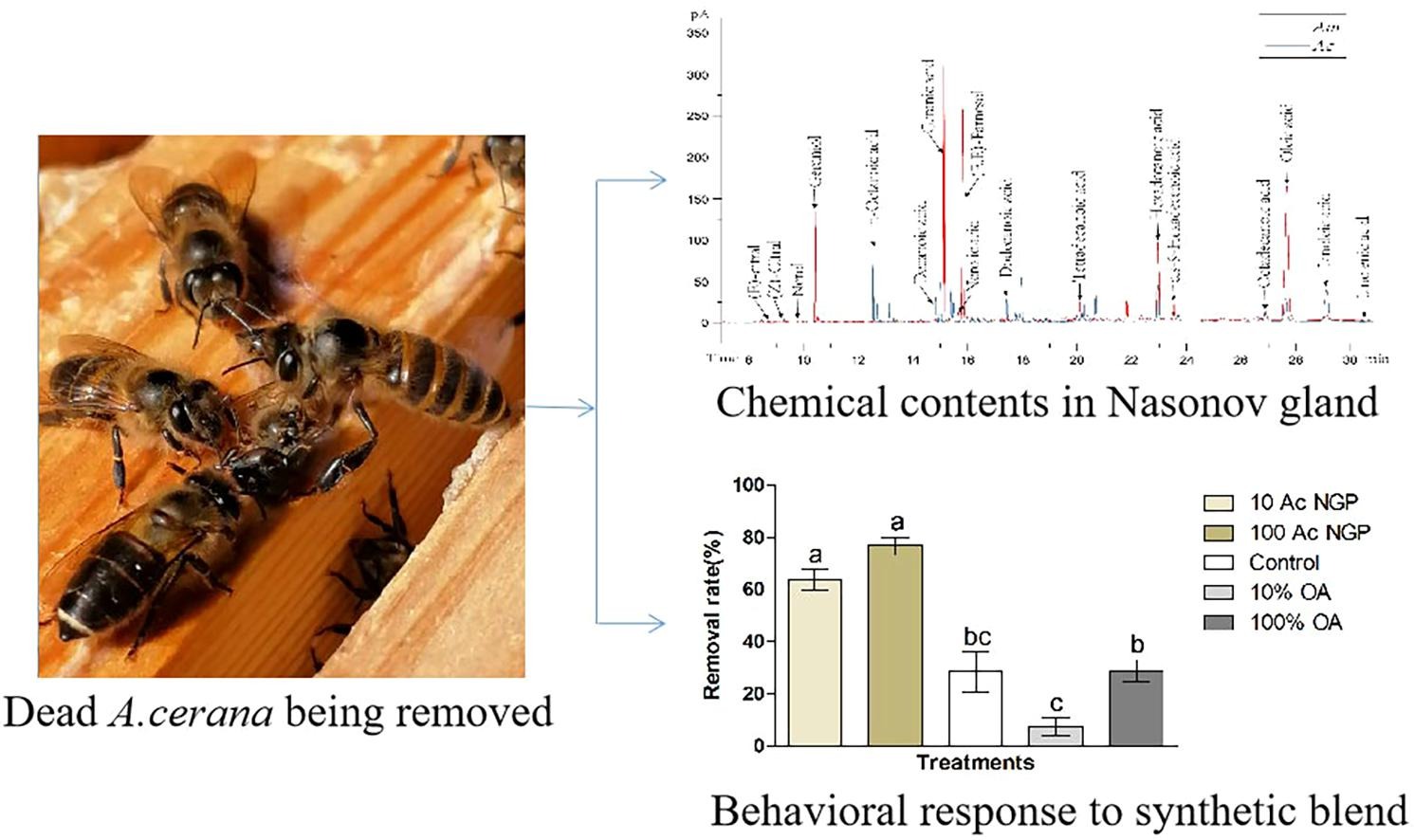
Honey bees live in social colonies containing tens of thousands of members. To ensure fitness, colonies must protect themselves from the invasion of pathogens. The ability to detect and remove dead adult bees is an essential part of honeybee colony fitness that prevents the spread of pathogens.
Nasonov pheromone is one of the pheromonal signals that honeybees receive inside their dark hives. The chemicals produced by the Nasonov gland in European honeybees (Apis mellifera) have long been identified. However, the chemical composition of the A. cerana (Asian honeybees) Nasonov gland has not been comprehensively identified.
In a study published in Journal of Insect Physiology, researchers from the Xishuangbanna Tropical Botanical Garden (XTBG) linked the A. cerana Nasonov gland synthetic blend to a social immunity function. They showed that the synthetic pheromone blend of A. cerana Nasonov stimulated corpse removal in hives.
The researchers analyzed the chemical components of the Nasonov gland in A. cerana and analyzed the chemical composition of the bodies of dead worker bees. Afterwards, they performed a behavioral assay to test detection and removal of oleic acid or synthetic Nasonov treated dead bees at the entrance.
The gas chromatography indicated that the A. cerana Nasonov gland contain only fatty acids, without any volatile terpenes. The levels of fatty acids all began changing, increase in quantity, in the worker bee bodies after death.
The behavioral assay test showed that the oleic acid may not be the “death cue” for A. cerana, as it did not trigger a response in guard or undertaking bees. The A. cerana Nasonov blend, however, had a significant effect on the removal of dummies, which indicates that the blend of chemicals inside likely play a role in stimulating the removal of corpses from a hive.
"To our knowledge, this is the first report in A. cerana linking the Nasonov gland synthetic blend to a social immunity function," said Prof. TAN Ken, principal investigator of the study.

The Nasonov gland pheromone as a potential source of death cue in Asian hiney bees (Image by Katrin Klett)

86-10-68597521 (day)
86-10-68597289 (night)

86-10-68511095 (day)
86-10-68512458 (night)

cas_en@cas.cn

52 Sanlihe Rd., Xicheng District,
Beijing, China (100864)

